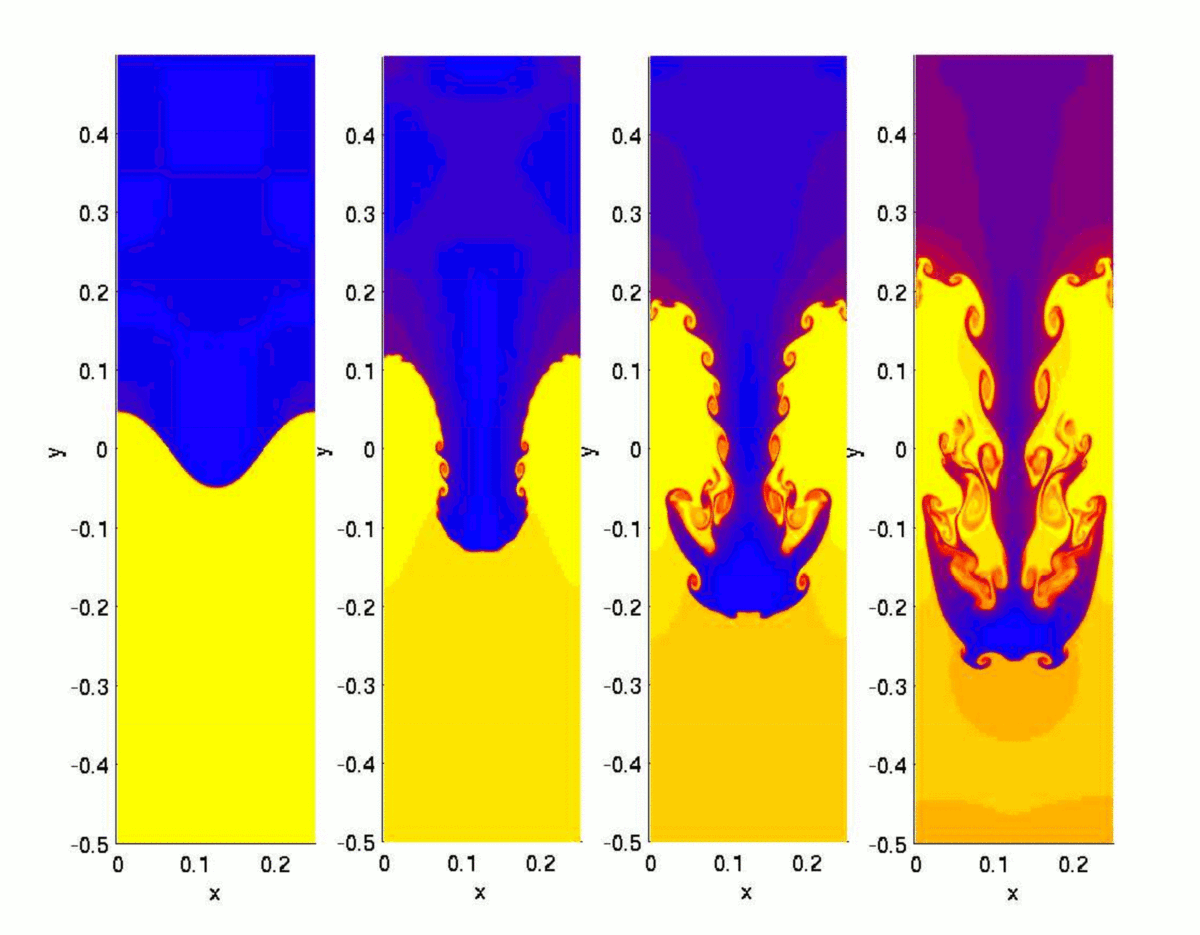Rayleigh-Taylor.gif

Part 11 of 18 Parts (Please read Parts 1 thru 10 first)
Laser based nuclear fusion has the potential to become the Number One energy source for humanity for the foreseeable future. Aside from the virtually unlimited fuel available, laser fusion also has huge energy and power densities. The growth in power-densities of energy sources has been part of technological progress down through history. It correlates strongly with significant increases in the real physical productivity of society.
Unfortunately, it is extremely hard to ignite a self-sustaining “fusion fire.” Temperatures of hundreds of millions of degrees are required for the deuterium-tritium reaction and billions of degrees for the hydrogen-boron fusion reaction without the generation of radioactivity. At much lower temperatures than required for either type of fusion, the fuel is converted into a plasma which is capable of extremely complicated behaviors.
Technically speaking, the extreme temperatures mentioned above only apply to thermonuclear fusion. The fusion reactions are produced by the random collisions of atomic nuclei bouncing around in a hot medium. In addition to extreme temperatures, it is necessary to subject the plasma to extreme pressure. It is also possible to trigger fusion more easily in highly non-equilibrium states. In such states, the very concept of temperature does not apply. This is the basis of hydrogen-boron fusion.
Returning to consideration of thermonuclear fusion, a useful metaphor is an internal combustion engine. Compression by the rising piston is necessary to create the conditions required for a rapid, efficient and complete combustion of the fuel. Without the compression, the gasoline vapor would burn gently without generating much power. Compression also causes heating. The compression in a diesel engine is so great that it achieves the ignition temperature for the mixture of fuel and air.
The compression factor for diesel engines is between fifteen and twenty times. By way of comparison, the compressions required to ignite laser fusion are approximately fifty billion times bigger. The question could be asked what kind of “piston” would be able to generate such huge pressures?
Up to the present, there has been a single basic approach that has dominated laser fusion research, and it has consumed by far the biggest share of financial resources available for laser fusion. This approach is referred to as ablative or radiation implosion. A tiny spherical fuel pellet is hit from all sides at the same time by laser pulses. X-rays generated by the laser pulses may also be used. The outer layer of the pellet is instantly raised to enormous temperatures and it expands explosively which is referred to as “ablation.” This sudden expansion exerts huge pressure on the inner layers of the fuel pellet causing it to implode. This compresses the fuel to tremendous densities. The shock waves which are generated by the compression and force toward the center of the fuel pellet play an important role in the subsequent fusion ignition process.
Unfortunately, this process has many problems. One of the main issues is something called the Rayleigh-Taylor instability. At the boundary between the outer and inner layers of the fuel pellet, slight undulations appear. They rapidly grow and penetrate deep into the fuel pellet which disrupts the compression and ignition process. Many creative solutions and expensive countermeasures have been tried but none of them could tame the Rayleigh-Taylor instability.
Please read Part 12 next